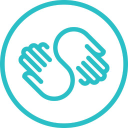From Scrubbing Floors To Running A $1M Screen Printing Business
Hello! Who are you and what business did you start?
Hello! My name is Adam Tanaka and I own a company called Life and Limb Printing. We are a screen printing and full-service merch company that specializes in merch production for breweries, outdoor clothing companies, and restaurants with a little bit of everything else sprinkled in.
In 2016, we became automated bringing on our first auto screen printing press which changed our output drastically. We went from printing about 120 pieces an hour on a manual press to hitting anywhere from 500 to 800 pieces an hour.
Since officially launching the business in 2010, we had our best month last year in October 2018 at $80,000 and now we are set to hit 1M by the end of 2019.

What's your backstory and how did you come up with the idea?
I...

Download the report and join our email newsletter packed with business ideas and money-making opportunities, backed by real-life case studies.

Download the report and join our email newsletter packed with business ideas and money-making opportunities, backed by real-life case studies.

Download the report and join our email newsletter packed with business ideas and money-making opportunities, backed by real-life case studies.

Download the report and join our email newsletter packed with business ideas and money-making opportunities, backed by real-life case studies.

Download the report and join our email newsletter packed with business ideas and money-making opportunities, backed by real-life case studies.

Download the report and join our email newsletter packed with business ideas and money-making opportunities, backed by real-life case studies.

Download the report and join our email newsletter packed with business ideas and money-making opportunities, backed by real-life case studies.

Download the report and join our email newsletter packed with business ideas and money-making opportunities, backed by real-life case studies.


























































